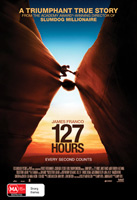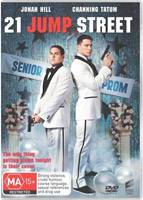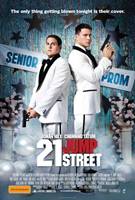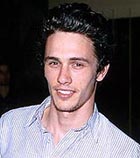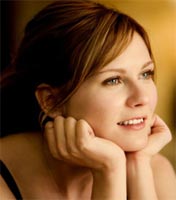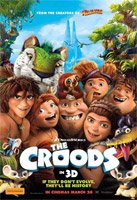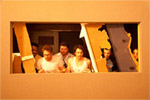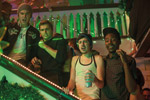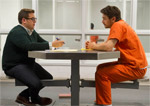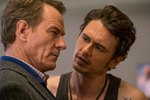Dave Franco The Disaster Artist
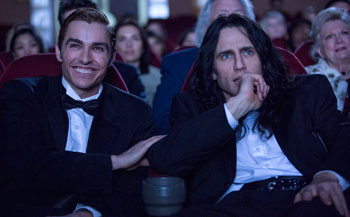
Behind The Scenes of Tommy Wiseau's The Room
Cast: Josh Hutcherson, Dave Franco, Alison Brie, James Franco, Seth Rogen, Lizzy Caplan, Zac Efron, Adam Scott, Bryan Cranston, Kristen Bell, Dylan Minnette, Megan Mullally
Director: James Franco
Genre: Comedy, Drama
Synopsis: With The Disaster Artist, director James Franco (As I Lay Dying, Child of God) transforms the tragicomic true-story of aspiring filmmaker and infamous Hollywood outsider Tommy Wiseau"an artist whose passion was as sincere as his methods were questionable"into a celebration of friendship, artistic expression, and dreams pursued against insurmountable odds. Based on Greg Sestero's best-selling tell-all about the making of Tommy's cult-classic 'disasterpiece" The Room ('The Greatest Bad Movie Ever Made"), The Disaster Artist is a hilarious and welcome reminder that there is more than one way to become a legend"and no limit to what you can achieve when you have absolutely no idea what you're doing.
The Disaster Artist
Release Date: December 7th, 2017
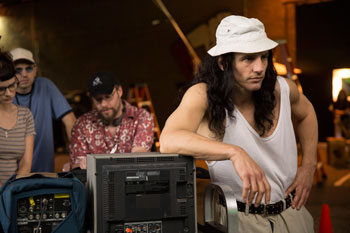 About The Production
About The Production
In 2003, an independent filmmaker launched himself into the business out of nowhere with one of the worst movies ever made"The Room, a torrid romantic melodrama about a love triangle gone awry that was written, directed, and produced by Tommy Wiseau. This enigmatic figure with dyed-black hair, bearing an impenetrable foreign accent, became infamous in Hollywood after erecting a billboard on Highland Avenue promoting his bizarre $6 million vanity project. On the billboard was a close-up of Tommy Wiseau's tough-guy demeanor, replete with a sunken eyelid and a misspelled tagline promising 'Tennessee Williams-level drama."
Premiering on two screens in Southern California and abruptly disappearing after grossing a paltry $1,800 in two weeks, The Room gained new life in the years to come through midnight screenings and word of mouth. Along the way, Wiseau came to embrace his role as the mysterious nobody who blundered his way into Hollywood infamy by pursuing his big dream no matter what the cost.
Flash forward to 2013, when Greg Sestero, one of The Room's stars, published The Disaster Artist, the young actor's account of moving to Los Angeles and making The Room after meeting Tommy Wiseau in a San Francisco acting class, bonding over their mutual love for James Dean. Prior to publication by Simon & Schuster, a galley of the book (co-written with Tom Bissell) fell into the hands of writer-director-producer James Franco, who was in Vancouver shooting The Interview with his former Freaks & Geeks co-star Seth Rogen. James Franco had not yet seen The Room, but immediately warmed to Greg Sestero's amusing and frequently charming account of filmmaking by accident"and finding friendship in disaster.
'Tommy Wiseau made his movie intending it to be a drama and then people laughed at it," says James Franco. 'Greg Sestero 's book was about Hollywood, but it was also the story of these misfits involved in the production of The Room. I saw The Disaster Artist as an industry-insider story told through outsiders in the vein of Ed Wood, a movie I loved." James Franco also was enticed by the idea of a bromance set behind the scenes of a haplessly amateur film production that, against all odds, went on to delight audiences around the world. He optioned the book, and in tribute to Tommy Wiseau, set out to direct, produce and star in the adaptation. Appearing as Tommy Wiseau "opposite his younger brother Dave playing Greg Sestero" James Franco provides a rollicking take on the American Dream, with two unlikely friends chasing after creative glory in ways that are both unexpected and winning.
Behind The Room
In its transformation from midnight movie to cultural phenomenon, The Room became an ironic success story unlike anything else in Hollywood history. The movie is a vast phenomenon, appealing to everyone from college kids and stand-up comedians to budding screenwriters.
Audiences lined up at midnight screenings across the country with props"including plastic spoons and footballs"that they hurled across the theater while offering running commentary on the film's bizarre dialogue, acting, and plot turns. Entertainment Weekly responded with an expansive feature in 2008 documenting the film's crazy cult, which had grown from a mysterious billboard into a global sensation.
Back in 2003, screenwriter Scott Neustadter, a recent Los Angeles arrival hoping to forge a Hollywood career, saw Tommy Wiseau's infamous billboard advertising The Room while driving around town, he was instantly transfixed. 'It was just this guy's face and he's looking down and there's a phone number," says Scott Neustadter. 'I thought it could be a restaurant or a nightclub"it was impossible to know what it meant. I had no idea until I talked to some people that it was a movie that somebody was showing periodically. I later heard that it was just unwatchably bad"yet everybody was talking about it. How terrible could it be?"
Tommy Wiseau's murky origins and background became the stuff of rumor and legend as his famous disaster grew in popularity. He claimed to be from New Orleans but more likely hailed from Eastern Europe"one producer compared his unclassifiable accent as a mixture of human and Ewok. He self-financed The Room's $6 million budget from a personal fortune purportedly rooted in Bay Area retail and real estate ventures. Most peculiarly, Tommy Wiseau kept his famous billboard up for five years following The Room's tepid initial release, paying $5,000 a month to keep the movie in the hearts and minds of Los Angeles motorists. After breaking every rule in the Hollywood playbook, Tommy Wiseau became an industry player.
Fifteen years after its botched premiere, The Room is still being discussed, embraced, laughed at, and loved"even among the Hollywood establishment, which rejected Tommy Wiseau for years.
'Financing your own movie is something you never do, and Tommy Wiseau did that with The Room, which is beyond insane," says The Disaster Artist producer Evan Goldberg of Point Grey Pictures, whose business partner is Seth Rogen. 'He bought his own equipment and wrote the script himself, checking off every box for all the things you shouldn't do in filmmaking if you're making an original project from scratch. But it still worked!"
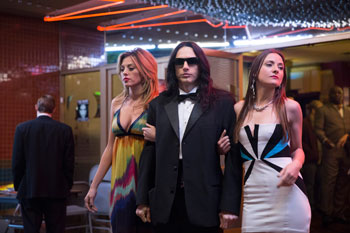 Screenwriter Michael H. Weber"who adapted The Disaster Artist with his writing partner Scott Neustadter"sees in Tommy Wiseau's farcical flop and mysterious origin a story of inspiration and hope from the mind of a dedicated striver. 'We don't know all the details of Tommy Wiseau's background, but after some struggle he made a movie that a lot of people still watch and talk about all over the world," says Michael H. Weber. 'So many people said no to him before that happened, but he persevered and made it anyway, which is so inspiring."
Screenwriter Michael H. Weber"who adapted The Disaster Artist with his writing partner Scott Neustadter"sees in Tommy Wiseau's farcical flop and mysterious origin a story of inspiration and hope from the mind of a dedicated striver. 'We don't know all the details of Tommy Wiseau's background, but after some struggle he made a movie that a lot of people still watch and talk about all over the world," says Michael H. Weber. 'So many people said no to him before that happened, but he persevered and made it anyway, which is so inspiring." Seth Rogen, who is one of the film's stars in addition to being a producer, was an early fan of The Room, and plays script supervisor Sandy Schklair, the lone voice of reason on a lunatic film set. Seth Rogen likens Tommy Wiseau's pet project to the ultimate act of outsider expression: 'The Room is weird and crazy, and seems nonsensical and even like gibberish at times, with its lack of logic and motivation for what's happening in the movie. But the more you find out about Tommy Wiseau and Greg Sestero's relationship and history, you come to embrace their story. Tommy Wiseau completely failed in one sense, but he also accomplished something in the way he was able to express himself with The Room."
Sestero's Story
Greg Sestero wrote The Disaster Artist in the aftermath of The Room finding its surprising second life as a midnight cult sensation. The memoir traces the earliest days of his friendship with Tommy Wiseau, when they were both aspiring actors living in San Francisco. Greg Sestero was 19 when he met Tommy Wiseau in acting class, they became scene partners after Tommy Wiseau delivered an especially unhinged take on Marlon Brando's meltdown in A Streetcar Named Desire. 'There was something about him that you couldn't take your eyes off of"everything he did in class was technically wrong," says Greg Sestero. 'The way he performed was a catastrophe, but there was something oddly artistic about it."
Outside of class he saw a side of Tommy Wiseau that was jovial, motivational and fun" always encouraging fellow creative types to be their best, to go for it against all odds. 'He wasn't some drugged-out weirdo, he was actually poignant and inspirational and he made me feel something that I couldn't get from my parents, who wanted me to give up my acting aspirations and settle down," says Greg Sestero. 'From the moment I saw Tommy give his monologue in acting class, I knew he was someone I could relate to."
One night, on a whim, they drove three hours to the site in Central California where James Dean died in a car accident. Both dreamed of acting careers, Tommy Wiseau's vision of the world"doing whatever you could for your art"inspired the teenage Greg Sestero, who was still trying to find himself. Their friendship deepened when Tommy Wiseau offered the younger man a room to rent in his West Hollywood condo, after Greg Sestero finally decided to move to Los Angeles and launch his acting career in the late 1990s. Later, Tommy Wiseau offered Greg Sestero the lead role in his long-gestating project The Room. 'Greg Sestero might have been the first person in Tommy Wiseau's life who really saw beyond the bizarre exterior and treated him as a human being," says Dave Franco. 'He was a real friend to Tommy Wiseau, who in turn valued his opinions and encouraged and supported him along the way. In the back of his mind, Greg Sestero probably knew Tommy Wiseau was fabricating a lot of things about his past, but he didn't really care, because Tommy Wiseau was such a great friend to him."
As brought to life in The Disaster Artist, the eight-month production of The Room was a disaster of epic proportions. The story of a San Francisco banker named Johnny (Wiseau) who becomes enmeshed in a love triangle between his wife Lisa (Juliette Danielle) and his best friend Mark (Sestero), the movie is awash with terrible dialogue, tone-deaf acting, and narrative cul-de-sacs. Tommy Wiseau, who routinely replaced actors on a whim, shocked his cast and crew by shooting simultaneously in both celluloid and digital formats, spending thousands to purchase camera equipment that most upstart directors typically rent. At one point, his production crew consisted of 400 people"an enormous number for a small, independently financed project.
Tommy Wiseau cast himself as the protagonist Johnny, employing the abrasive, flustered take on method acting that he cultivated in his San Francisco acting class with Greg Sestero. He even plagiarized James Dean's immortal 'You're tearing me apart!" line from Rebel Without a Cause for one of The Room's most infamous, and widely ridiculed, scenes. Under his own direction, Tommy Wiseau's performance is unlike anything else in motion pictures, something that transfixed James Franco when he finally saw the movie years after its release. 'He's struggling to be one thing while he's grappling with all this other stuff that gets in the way of his success, and we see that in his performance," says Franco. 'He created this almost Dostoyevskian struggle in his role as Johnny. He was genuinely trying to express something in The Room"his feelings, his experience with life, his devastation over being rejected by the world."
Entering The Room
Franco remembers spotting Tommy Wiseau's billboard during the earliest days of his acting career in Los Angeles, but saw the advertisement as something akin to Hollywood icon Angelyne's brazen style of self-promotion. It wasn't until he read The Disaster Artist in 2014 that James Franco sought out a screening of the notorious feature. Upon viewing the movie, he instantly became one of the initiated, seeing elements of Sunset Boulevard, Boogie Nights and The Talented Mr. Ripley in Tommy Tommy Wiseau's improbable rise to fame. He also saw it as a surreal, modern take on the American Dream. 'This guy comes here and wants to be a movie star, and against all odds he funds his vision, directs it, and people wind up loving it," says James Franco. 'Not in the way he intended, of course, but Tommy doesn't know that. I felt like there was another side of the story"Greg's perspective"that would make the movie of The Disaster Artist even richer."
At the time, James Franco had reached a turning point in his prolific career, which took off around the turn of the century with Freaks & Geeks and his lead role as James Dean in Mark Rydell's critically acclaimed television movie about the iconic actor. Moving easily from acting to writing, directing, and producing, James Franco had become exhausted in his pursuit of the filmmaking craft, until he found renewed energy in the studio comedies The Pineapple Express and This Is the End, which audiences responded to in a big way. He envisioned The Disaster Artist in the same mold as those hits"a broad, fun comedy designed to connect with a wide audience. 'Greg's book woke me up in a way that Tommy was awakened after The Room found its new life," says James Franco. 'You have to accept the perception that people want to have of you but also be yourself. What's so beautiful about reading The Disaster Artist is that it really captures Tommy Wiseau's desires, his dreams of wanting to break into Hollywood. Those are every creative person's dreams"making something that's going to reach a lot of people, and finding a community of people we can connect to through our work."
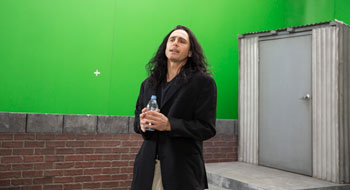 James Franco was in the middle of shooting The Interview in Vancouver when he found himself talking to both Tommy Wiseau and Greg Sestero on the phone in the middle of the night, after he had optioned Greg Sestero's book. 'I wasn't sure how much of a control freak Tommy was going to be, or how much he had changed since The Room," says James Franco. 'One of the first questions Tommy Wiseau asked me was -Who will play me?' When I said I didn't know, he suggested Johnny Depp"one of the biggest stars in the world, naturally."
James Franco was in the middle of shooting The Interview in Vancouver when he found himself talking to both Tommy Wiseau and Greg Sestero on the phone in the middle of the night, after he had optioned Greg Sestero's book. 'I wasn't sure how much of a control freak Tommy was going to be, or how much he had changed since The Room," says James Franco. 'One of the first questions Tommy Wiseau asked me was -Who will play me?' When I said I didn't know, he suggested Johnny Depp"one of the biggest stars in the world, naturally." It was Greg Sestero who suggested that James Franco consider playing Tommy Wiseau in The Disaster Artist. 'I'd been following James Franco since he did the James Dean movie," says Greg Sestero. 'He did the best Dean that I had ever seen"and I always thought our story had a lot of Dean's spirit in it, with the -You're Tearin' Me Apart!' dialogue, which was always a big inspiration on our friendship." Later, Sestero confided in James Franco that Tommy Wiseau had told him that the only people he wanted to play him on the big screen were Johnny Depp or James Franco himself.
As production on The Interview continued, Franco shared The Disaster Artist with his co-star Seth Rogen, believing that the project was the right fit for Seth Rogen's Point Grey Pictures, which had found success with the studio comedies 50/50, This Is the End and Neighbors. 'Seth Rogen's company was smart about how they made things, but they were still working within the studio system," says James Franco. 'They could make these studio pictures and put their voice into it on every level. They were making exactly the movies they wanted to make."
James Franco was also looking to take a break from directing prestige independent films like As I Lay Dying, his adaptation of the William Faulkner classic, and Child of God, based on Cormac McCarthy's early novel"critically admired works that weren't bringing him a significant audience as a director. 'I'm a lot closer to Tommy Wiseau in this story than I like to admit," says James Franco. 'Child of God wasn't exactly screaming box-office hit."
Writing the Script
With Point Grey, Good Universe and Ramona Films on board as producers, James Franco sought out Scott Neustadter and Michael H. Weber, who launched their careers with the infectious romantic comedy (500) Days of Summer and went on to find mainstream and critical success with The Fault in Our Stars and The Spectacular Now. Franco saw the writing duo's own friendship as a reflection of Greg Sestero and Tommy Wiseau's unique creative bond. 'I thought they were their own version of Greg Sestero and Tommy Wiseau in terms of their collaborative relationship," says James Franco. 'Scott and Michael are great at relationship movies, but they hadn't really done a bromance."
The writers, who forged their career after meeting at the same job, saw The Disaster Artist as the story of a friendship between two people who share a similar dream. 'It's not a movie about movies as much as it is about dreamers and people who very much want to do something, but don't have the access or ability," says Neustadter. 'We very much related to that story." Adds Weber: 'Greg Sestero and Tommy Wiseau give each other what they need in order to move forward and achieve their dream. One has all the confidence in the world, but not necessarily the ability to execute it, and the other is more on the ball, but as removed as possible from the inner workings of creativity. He doesn't have the confidence and belief in himself to pursue his dream until he meets this other person, who happens to be Tommy Wiseau."
What the writers succeed in capturing in The Disaster Artist is the delirious rush and spirit of fun that often surfaces when two people find themselves on the same wavelength, whether as friends, lovers, or creative partners. Recreating the same joyful, rambunctious spirit of their breakthrough comedy (500) Days of Summer"in which staid office worker Joseph Gordon-Levitt glowingly comes to life after falling in love with co-worker Zooey Deschanel"Neustadter and Weber once again find movie magic in the power of relationships. 'Chasing your dreams can be really lonely, and Greg Sestero and Tommy Wiseau come to believe in each other when no one else does," says Neustadter. 'We've both been there. We both believed we could write and do this thing and people said -Oh, come on. When are you going to give up on that dream?' We connected with these characters in a very strong way."
Assembling the Cast
After the script was complete, James Franco cast himself as Tommy Wiseau and immediately cast his brother, Dave Franco, as Greg Sestero, despite the siblings never having appeared together in a feature film. They had starred together in a series of short videos for Funny or Die, and had formed a production company together, but the younger Franco had forged his own path in the industry, reticent of sharing the spotlight with his famous older brother.
James Franco explains, 'I've tried in the past to cast my brother in bigger things but he always turned me down because he was trying not to live in my shadow"he's developed this identity that's distinct from mine. I knew from making those Funny or Die videos"which were parodies of acting lessons in which I was playing an exaggerated version of myself and he was my student"that our dynamic was perfect for the central relationship in The Disaster Artist." Adds Dave Franco: 'Obviously I've known my brother for his entire life, and we have this very particular dynamic, which is very supportive and had parallels to Tommy Wiseau and Greg Sestero in the way one of them let the other come live with him when he was starting out, helping get his career established, like my brother did for me when I moved to Los Angeles."
Dave Franco was filming another movie in Boston when his brother offered him the role of Greg Sestero, prompting him to watch The Room for the first time during a break in shooting. 'My first thoughts were how the hell did this all come together, and why is this movie such a big hit," says James Franco. 'But after reflecting on it, it all made sense"the movie stands above the Sharknados of the world because it never dawned on Tommy Wiseau that he was making a bad movie. The intentions behind The Room were so pure in Tommy Wiseau's mind that he thought he was going to win the Academy Award for his performance."
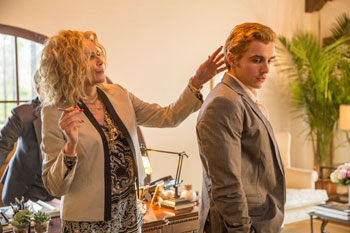 The stellar ensemble cast also features long-time James Franco collaborator Seth Rogen, playing the harried script supervisor Sandy Schklair"the only crewmember on Tommy Wiseau's set who had actual filmmaking experience. Alison Brie joined the film to play Amber, the girlfriend who comes between Greg Sestero and Tommy Wiseau's friendship, prompting the young actor to move out of Tommy Wiseau's Hollywood condo. The in-demand actress first heard about The Room when she was working on NBC's Community" discovering that the hit sitcom's camera operator, Todd Barron, happened to be the director of photography on Tommy Wiseau's notorious feature debut. Her interest piqued, she listened to The Disaster Artist on tape with her now-husband Dave Franco during a road trip before watching the movie on DVD. For Allison Brie, a highlight of filming The Disaster Artist was watching key cast members like Ari Graynor, Paul Scheer and Jacki Weaver transform into close approximations of original cast members. 'My favorite day was when we shot in the movie theater for The Room's premiere," says Allison Brie. 'It was hilarious watching our actors improvise their characters' reactions to seeing the movie, especially when the sex scenes go on and on. They look just like the people from the original movie."
The stellar ensemble cast also features long-time James Franco collaborator Seth Rogen, playing the harried script supervisor Sandy Schklair"the only crewmember on Tommy Wiseau's set who had actual filmmaking experience. Alison Brie joined the film to play Amber, the girlfriend who comes between Greg Sestero and Tommy Wiseau's friendship, prompting the young actor to move out of Tommy Wiseau's Hollywood condo. The in-demand actress first heard about The Room when she was working on NBC's Community" discovering that the hit sitcom's camera operator, Todd Barron, happened to be the director of photography on Tommy Wiseau's notorious feature debut. Her interest piqued, she listened to The Disaster Artist on tape with her now-husband Dave Franco during a road trip before watching the movie on DVD. For Allison Brie, a highlight of filming The Disaster Artist was watching key cast members like Ari Graynor, Paul Scheer and Jacki Weaver transform into close approximations of original cast members. 'My favorite day was when we shot in the movie theater for The Room's premiere," says Allison Brie. 'It was hilarious watching our actors improvise their characters' reactions to seeing the movie, especially when the sex scenes go on and on. They look just like the people from the original movie." Ari Graynor was cast as Juliette Danielle, the actress who plays the conniving, manipulative antagonist Lisa"an object of intense passion among The Room's real-life aficionados, who frequently hurl invectives at the character during midnight screenings. Prior to production, Ari Graynor watched the movie dozens of times for inspiration to find out what made the movie"and Tommy Wiseau" click with audiences. 'When I first watched it, I was just so taken aback by the whole thing"what the hell was going on with Tommy Wiseau to make something like this happen?" says Ari Graynor. 'It was only after I watched it several times that Tommy Wiseau became sympathetic and even endearing in his pursuit. The more I got into The Room, and Tommy Wiseau, the more I thought to myself, maybe this movie isn't so bad! I started to really feel for Tommy Wiseau, for what he's trying to express, and how he sees the world."
Jacki Weaver had just completed Zeroville for James Franco and was quickly cast as Carolyn Minnott, Lisa's cancer-afflicted mother, another fan favorite. Unlike many viewers and fans of The Room, however, Jacki Weaver was admittedly less than bowled over by Wiseau's original vision. 'I didn't get any schadenfreude out of watching it"in fact I found it a very distressing experience," says Weaver. 'But I will admit it's a fascinating story. I said to my husband, -We're about to watch the worst movie ever made.' And my husband said, -No, no, no, I've seen a lot of films in my life and a lot of them were very bad, it can't be the-the worst film ever made.' After 99 minutes of our lives that we'll never get back, he said -Darling, I think you're right, this is the worst movie ever made.'" Nevertheless, Jacki Weaver reveled in recreating a legendary howler with Franco at the helm. 'It was so entertaining watching James Franco direct at the same time he was playing Tommy Wiseau," she says. 'He's such a clever young man, with such a brilliant sense of humor. I never want him to stop being funny and odd."
Becoming Wiseau
For the wildly prolific James Franco, embarking on a project in which he stars as a true-life figure while simultaneously directing a simulation of the movie that made Tommy Wiseau famous required a very specific transformation. The actor is no stranger to getting lost inside the characters he plays, whether James Dean, Aron Ralston"the injured hiker in the Academy Award-nominated 127 Hours"or the gangster rapper Alien in Spring Breakers. Like those indelible characters, James Franco brings the same obsessive, immersive quality to his Tommy Wiseau incarnation. 'James Franco is distractingly handsome in real life, so when you make him distractingly strange-looking, it's very jarring," says producer Evan Goldberg. 'He does not look like Tommy Wiseau at all in real life."
The first challenge in transforming James Franco into Tommy Wiseau involved the hair and makeup skills of frequent Franco collaborator Nana Fischer and the prosthetic expertise of Andrew Clement (Deadpool, Guardians of the Galaxy). Fischer and Clement and their teams had to find a way to make Franco's otherwise narrow face appear as wide and iconic as Tommy Wiseau's billboard-famous visage, with its pronounced features including rigid jawline, sunken eyelid and menacing black hair. 'We came up with different ideas for how we could get James' jaw wider and more square like Tommy's," says Fischer. 'Among other effects, we used false cheeks, a false chin, a false nose and, of course, fake hair to achieve Tommy Wiseau's spectacular dye job."
Clement took a cast of Franco and sculpted new chin, nose, and eyebrow pieces, to duplicate Wiseau's prominent facial features. Franco wore a total of six prosthetic appliances on his face while appearing in character as Wiseau for the entire shoot. Since prosthetics are individual pieces that require gluing and fastening, with makeup application to match the skin tone, Franco was obliged to wear the appendages all day long, whether acting or directing, requiring an hour at the beginning and end of shooting days to apply and remove hair, makeup and prosthetics. To complete the effect, the actor wore blue contact lenses for the production's sixteen-hour shooting days.
'Being on set was funny because James Franco would speak like Tommy Wiseau all day long even when he wasn't exactly in character," says Seth Rogen. 'You didn't have to refer to him as Tommy Wiseau on set, but when you wanted to talk to him about stuff as James Franco"logistical conversations you need to have when you're making a movie"he would speak in Tommy Wiseau's voice and accent as he was doing it. Lots of times you didn't know which reality he was existing in"but for James Franco it didn't seem all that weird."
Duplicating the Vision
To recreate key scenes and motifs from The Room inside its new incarnation as The Disaster Artist, Franco turned to crewmembers including production designer Chris Spellman, who duplicated the cheap sets improvised by Tommy Wiseau in the original shoot; director of photography Brandon Trost, who mimicked the amateurish lighting and camera work that has helped define The Room as one of the worst movies of all time; and costume designer Brenda Abbandandolo, who recreated the looks of the cast and crew of the cult classic, reflecting the time period in which they lived and filmed.
Some of the original movie's scenes were recreated shot-for-shot as actors sought to recapture moments as precisely as they were conveyed when The Room filmed in Los Angeles back in 2002. 'It was an exercise in meticulous filmmaking but focusing on something that was done poorly the first time around," says James Franco. Adds Brandon Trost: 'It's like watching a train wreck in slow motion, you never know what Tommy Wiseau's going to do next, and we wanted to reflect that with the camera work in The Disaster Artist."
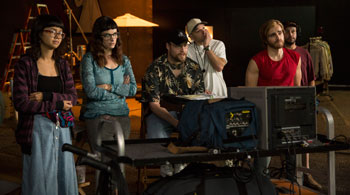 Brandon Trost and his camera crew"two of whom worked with Tommy Wiseau on The Room"employed a -you-are-there' approach to recreating the behind-the-scenes sequences from the original movie, imitating the shooting style of the Belgian auteurs Jean-Pierre and Luc Dardenne through the use of handheld cameras placed over the shoulder as crewmembers followed people around the set. Trost went for maximum exactitude, studying The Room shot by shot and frame by frame, capturing as many camera bumps, focus gaffes or bad shadows on characters' faces that he could. 'It's really hard to shoot something that you're trying intentionally to make look bad," says Brandon Trost. 'That's part of why I think The Room became so successful"because it was made in earnest. Tommy Wiseau made it thinking that it would become the next Citizen Kane."
Brandon Trost and his camera crew"two of whom worked with Tommy Wiseau on The Room"employed a -you-are-there' approach to recreating the behind-the-scenes sequences from the original movie, imitating the shooting style of the Belgian auteurs Jean-Pierre and Luc Dardenne through the use of handheld cameras placed over the shoulder as crewmembers followed people around the set. Trost went for maximum exactitude, studying The Room shot by shot and frame by frame, capturing as many camera bumps, focus gaffes or bad shadows on characters' faces that he could. 'It's really hard to shoot something that you're trying intentionally to make look bad," says Brandon Trost. 'That's part of why I think The Room became so successful"because it was made in earnest. Tommy Wiseau made it thinking that it would become the next Citizen Kane." The Disaster Artist filmed only a few blocks from where The Room was shot in Los Angeles, using a camera-testing warehouse to substitute for Tommy Wiseau's original location because it felt sufficiently tight and cramped, allowing crewmembers to recapture the on- and off-screen claustrophobia that was a hallmark of the 2003 predecessor. Spellman, like Tommy Wiseau, used the same warehouse for all of the new film's sets, transforming the raw space into an alley, bedroom and living room at various stages of production, the infamous green-screen rooftop set from the original production was built in a nearby parking lot, using the improvised, micro-budget techniques Tommy Wiseau employed to create a San Francisco nocturne that in both films resembles a shoddy made-for-TV movie from the 1980s. 'Our biggest challenge was staying true to the three layers we had to respect in order to make our movie feel like the original," says Spellman. 'We were in essence filming the sets of The Room, including the crew that was filming in those sets (who were actors) and then the actual crew members of The Disaster Artist, who were working on the greater film set. We had to find the appropriate space so that everyone involved"actor or otherwise"could authentically replicate Tommy Wiseau's vision."
Costume designer Abbandandolo studied fashions between the years 1998 and 2003"the time period encompassing Greg's first encounter with Wiseau and the premiere of The Room"to recreate the various looks associated with the film and its era. She dug back into the 1980s, specifically studying the pirate punk-rocker Adam Ant, to cultivate Tommy Wiseau's grungy, anachronistic style, melding dark-hued, disheveled clothing with the peacocking demeanor of a Sunset Strip metal god. 'He's like the -80s rocker who got it all wrong," says Abbandandolo. 'It's as though Tommy went shopping for clothes at Goodwill but still couldn't get his look down."
Sestero, on the other hand, was the embodiment of the all-American teenager in cargo shorts and tank top when he first met Wiseau in San Francisco at age 19. 'The contrast between them was night and day," says Abbandandolo. 'Greg was this nice kid from a good home who was probably watching Point Break and listening to Dave Matthews Band while Tommy was reading Tennessee Williams and working his failed rocker vibe. When you seem them together, you have to ask yourself how these two people could possibly wind up as friends."
The costume designer also had to recreate the look of the actors involved with The Room, including fan-favorite Juliette Danielle, played in The Disaster Artist by the comedienne Ari Graynor. 'I wanted Ari to look like the classic -90s girl, even though that's one of the most unfortunate periods in history for fashion," says Abbandandolo.
The Legacy of The Room
Nearly two decades after its ragtag premiere at the Laemmle Fairfax in Los Angeles, The Room continues to delight audiences around the world at midnight screenings in North America and in places as far-reaching as Scandinavia, the United Kingdom, and New Zealand. People from all walks of life continue to gather in groups to experience Wiseau's oddball vision, including such members of the Hollywood community as Zach Braff, J.J. Abrams, Jonah Hill, Will Arnett, and Kristen Bell (Veronica Mars), who secured a print of the movie in the early days of its fanfare and began hosting screening parties for her friends.
Whether by accident or design, Tommy Wiseau pursued his creative vision against all odds and made a movie for the ages, one whose raucous, go-for-broke spirit the The Disaster Artist lovingly recaptures down to its most meticulous, messy details. For all of its missteps, The Room has succeeded in bringing thousands of people together"its popularity simply refuses to wane. 'People still come to the midnight shows and throw spoons at the screen and shout throughout the entire movie," says Sestero. 'Tommy created a work of art that has stood the test of time. He always wanted to be accepted by mainstream Hollywood"how can he not be thrilled by all this?" Concludes Franco: 'For this movie to play in cities around the world means there is something more going on than just an epically bad movie that's fun to laugh at with a group of people. The Room is unique because of Tommy Wiseau, who put his whole heart into his project. The Room has what other bad movies don't have, which is pure passion."
The Disaster Artist
Release Date: December 7th, 2017
Have You Seen This?
MORE
- Mission: Impossible Fallout
- Glenn Close The Wife
- Allison Chhorn Stanley's Mouth Interview
- Benicio Del Toro Sicario: Day of the Soldado
- Dame Judi Dench Tea With The Dames
- Sandra Bullock Ocean's 8
- Chris Pratt Jurassic World: Fallen Kingdom
- Claudia Sangiorgi Dalimore and Michelle Grace...
- Rachel McAdams Disobedience Interview
- Sebastián Lelio and Alessandro Nivola...
- Perri Cummings Trench Interview

